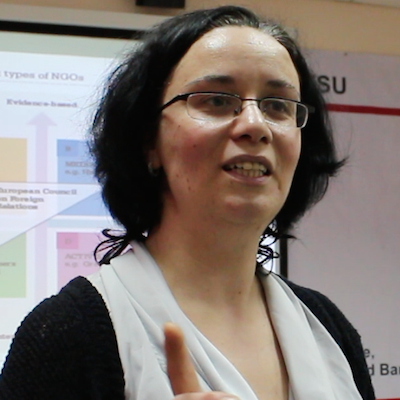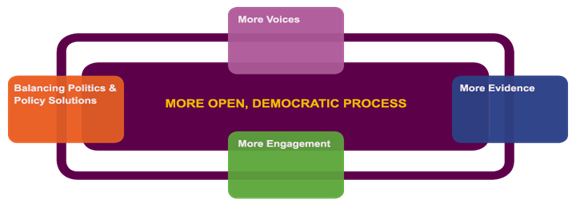On Thursday, March 26th, Dr. Nani Macharashvili, from TSU delivered a lecture in which she touched the importance of deliberative model of public policy making.
In her first part of presentation she defined conventional and unconventional participation models. As she said ‘Conventional’ participation concerns with institutionalized modes of political action, such as reading about politics, discussion of politics, contacting officials, working for a party and other activities concerning the electoral process. On the other hand ‘unconventional’ forms of political behavior refers to a means of political redress, namely the use of tactics as petitions, demonstrations, boycotts, rent or tax strikes, unofficial industrial strikes, occupations of buildings, blocking of traffic, damage to property, and personal violence”.
Deliberative Democracy
Dr. Nani also underlined the importance of public involvement in policy making and the benefits it has for the whole society. She said that governments rarely have sufficient means to solve all the problems in a certain area; therefore local people can bring the best source of knowledge and wisdom about their surroundings. “The process of working together and achieving results also creates a sense of community, which is much needed in Georgia. In addition, involving public to decision making leads to more appropriate results and sustainable development. Top down model has the opposite results,” she added.
High Touch or High Tech?
In the second part of her talk she emphasized the importance of face-to-face communication instead of basing decisions on i.e. Geographic Information Systems (GIS) or computer mediated dialogue. She brought an example of transportation modeling in the city, infrastructure projects and more. As she said citizen engagement is very well practiced in Brazil. “One example can be the participatory budgeting, in which at least 50 000 people participate regularly and as a result the country saw an increase from 75 to 99% of homes having running water and the number of public schools almost tripling.
The presentation concluded with questions from audience and lively discussion.












